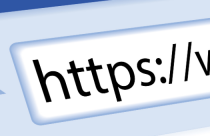How to Find Out If Your Research Is “Highly Cited”?

Publishing a research is not enough these days to make a mark in academia. In academia, the reputation as a scientist depends on the quality and quantity of your publications. But it also depends on the number of citations.
Citations give recognition to the scientist who discovered a finding and was the first to publish it. Therefore, the number of researchers who cite your work in their publications, can help assess your academic performance. It shows that fellow researchers could build on your finding and that it was useful to the research field. Reports such as the Highly Cited Researchers List, published by the Web of Science, fuel the competitiveness of academics. However, a coin always has two sides and so does the competition of citations in academia.
Citation Ranking
The Web of Science complies and publishes the Highly Cited Researchers List. This citation database indexes every piece of research content to form a powerful search engine of the worlds’ scientific information. With this information, they are able to publish annual reports that rank journals and authors. This prestigious list recognizes the world’s top researchers whose citation records ranked in the top 1 % in their field in the Web of Science database. Being on the Highly Cited Researchers List means you are an influential and successful researcher – what an honor.
Do Researchers Manipulate Citations?
Unfortunately, the above need of citations has led to the increasing number of cases of citation manipulation. This is because research is intensely competitive. Researchers compete to have their research published in the most prestigious journals for a better chance of research funding. Ultimately your citation ranking is an indication of your academic performance. The higher the number of your citations, the more successful is your academic career. To reduce the number of such scenarios, let us find out how to determine a “highly cited” research.
Citations in Google Scholar
For example, you are an early career researcher, and your University prefers the Web of Science as a data source. However, you have very few citations in the Web of Science but a respectable number of citations in Google Scholar. In such cases, one can argue that Google Scholar citations are a more accurate measurement of citation impact for junior scholars.
This is true because Google Scholar includes citations in Masters and Doctoral theses, conference proceedings and working papers. In most cases, this will ultimately be reflected in Web of Science citations. Google Scholar also includes books, book chapters, a much wider range of journals than Web of Science, especially in the Social Sciences and Humanities.
In some cases, papers don’t receive enough citations even in Google Scholar. This is true for the discipline Social Sciences and Humanities, where the publication process is generally more drawn-out. This also involves many rounds of revisions and longer time to print even accepted publications.
Compare Your Articles with Articles Published in the Same Year
Secondly, if you don’t have many citations in Google Scholar either, but have one or two articles with more than an incidental number of citations, try to compare these articles with other articles in the same journal that year. Even if a 2015 article has only accumulated a couple of Google Scholar citations by the end of the year, if most of the articles in the journal from the same year have no citations so far, you have a pretty good case to make.
Check ISI Baseline Data for Your Field
Thirdly, you can check for citations to publications in ISI listed journals (which unfortunately only covers a part of the entire journal universe especially in the Social Sciences and Humanities) in the Web of Knowledge database “Essential Science Indicators Baselines”.
Even a Few Citations Can Still Mean Being Highly-Cited
For instance, if you had published an article in an ISI listed journal had even just two ISI citations, your article may be in the top 20% most cited articles for that specific year. Three citations would put it in the top 10% most cited articles. Obviously, for articles published in earlier years the number of citations to be in the top 20% or 10% may be higher.
Disciplinary Differences in Expected Citations
In fact, in Computer Science, Engineering, and Mathematics, even for papers in ISI listed journals that are 10 years old, 4-5 ISI citations might be enough to put an article in the top 50% most cited papers in their fields, around 20 citations puts you in the top 10%. For the Social Sciences, these numbers are not much higher. This is partly due to the lack of comprehensive coverage of the Web of Science in these disciplines. However, it is also due to differences in citation behavior across fields. To be in the top 50% most cited articles in Molecular Biology & Genetics, you would need your 10-year old paper to have 26 citations, whereas 116 citations are needed to be in the top 10%.
How To Increase the Number of Citations Without Manipulation?
Finally, if you have only a few citations in either the Web of Science or Google Scholar, it might be worth tracking each of them down to see who is citing your work and in which outlets. It is more impressive when many of your citations occur in the top journals in your field or if some famous academics in your field cite your articles. Some of the fame and quality image of the journals and of the academics citing your work might rub off on you in the eyes of your evaluation committee.
If you have very few citations, you may also need to focus on the quality of the journals that your work appeared. Whilst in general, this is not appropriate as some papers in top journals never get cited, on average papers in top journals get cited more than papers in lower-ranked journals. That’s why they have higher Journal Impact Factors. Therefore, if your work has been published in high-impact journals, you can make the case that it is more likely that your work will be highly cited.









